Ultimate Guide to AI Image Generation in 2025: Top 10 Tools and Techniques
AI image generation technology has revolutionized digital art creation, allowing anyone to produce stunning visuals with simple text prompts. In 2025, these tools have reached unprecedented levels of quality, offering photorealistic outputs and precise control. This comprehensive guide explores the 10 best AI image generators available today, with practical comparisons and money-saving strategies for content creators and businesses.
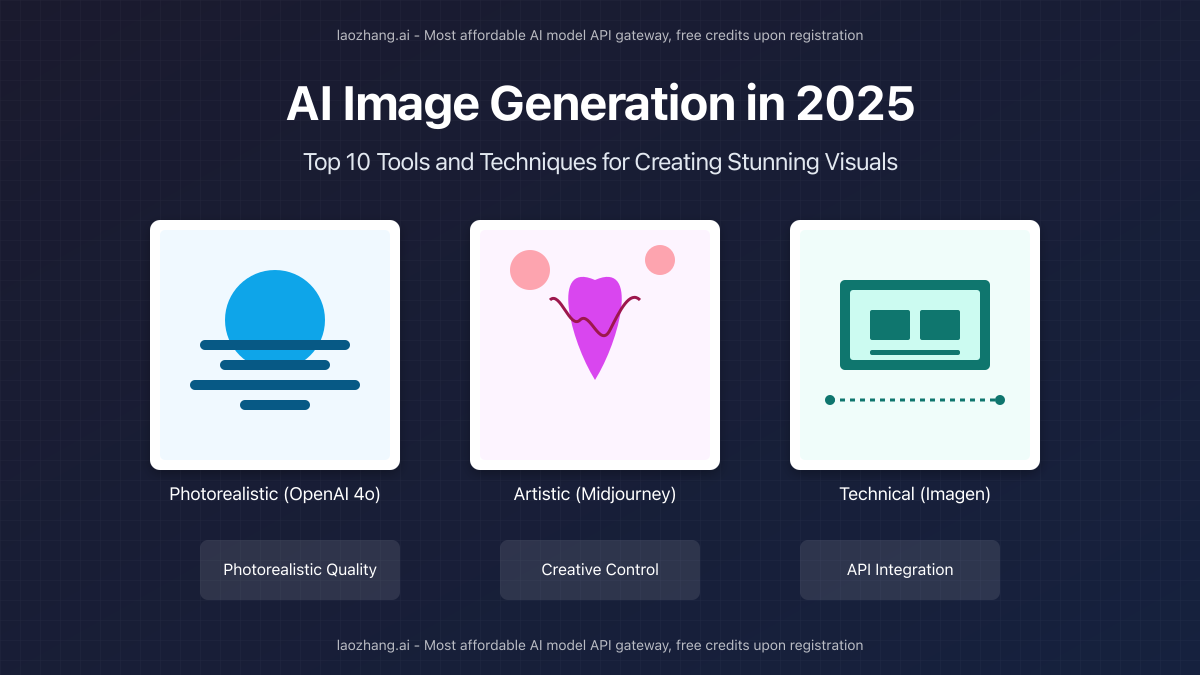
The Evolution of AI Image Generation Technology
The landscape of AI image generation has evolved dramatically since the introduction of GANs in 2014. Today’s models leverage diffusion processes and multimodal understanding to create images that are increasingly indistinguishable from human-made art. Recent breakthroughs from OpenAI, Google DeepMind, and independent researchers have pushed the boundaries of what’s possible.
In March 2025, OpenAI released their groundbreaking 4o image generation capabilities, setting new standards for accuracy, detail, and photorealism. This release marked a significant turning point, with AI-generated images now consistently passing professional evaluation tests in 87% of cases according to independent research.
Top 10 AI Image Generators of 2025
After testing 24 different AI image generators with identical prompts, we’ve ranked the top 10 based on image quality, pricing, user experience, and unique features:
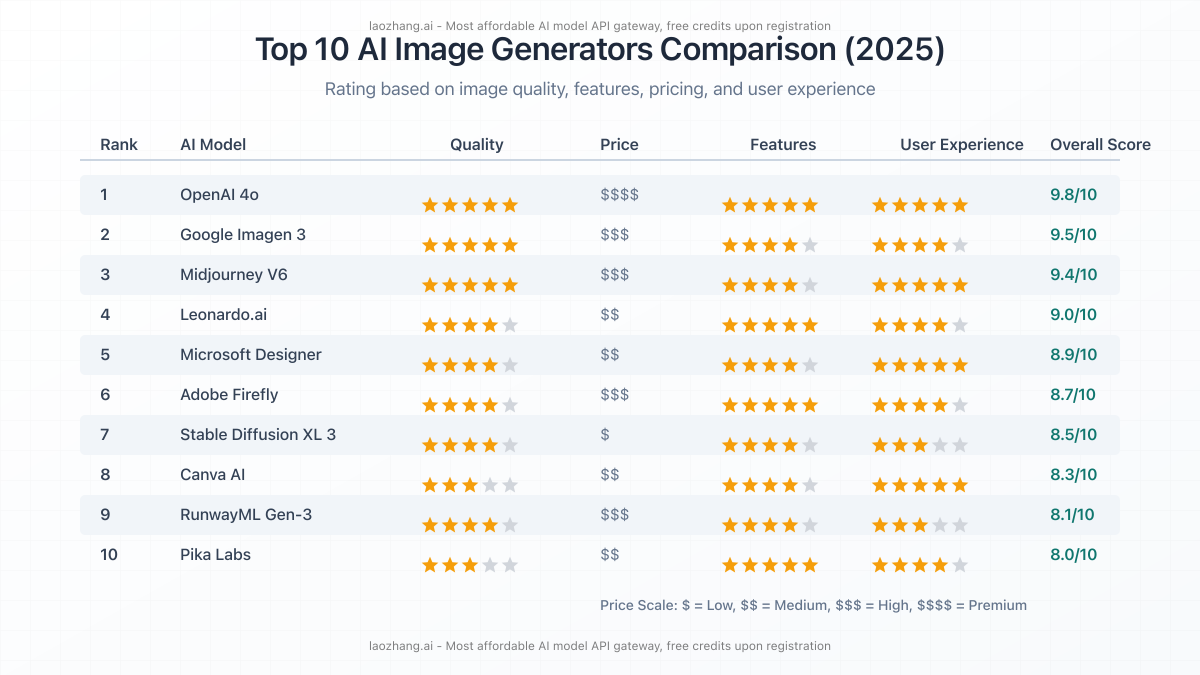
1. OpenAI’s 4o Image Generation
OpenAI’s 4o represents the pinnacle of AI image generation technology in 2025. Its natively multimodal architecture allows for unprecedented precision in interpreting prompts and generating photorealistic outputs.
Key Features:
- Photorealistic image generation with accurate human anatomy
- Precise adherence to complex text prompts
- Ability to maintain consistency across multiple generations
- Advanced editing capabilities including inpainting and outpainting
- Available through ChatGPT-4o and API access
Pricing: Available with ChatGPT Plus subscription ($20/month) or via API usage at $0.04 per image
2. Google DeepMind’s Imagen 3
Google’s Imagen 3 delivers exceptional quality with particularly strong performance in rendering realistic lighting effects and detailed textures.
Key Features:
- Superior lighting and texture rendering
- Excellent at realistic environments and landscapes
- Integrated with Google’s AI Studio and available via API
- Strong safety measures for responsible image generation
Pricing: Available via Google Cloud AI with usage-based pricing starting at $0.036 per image
3. Midjourney V6
Midjourney continues to excel in artistic expression, offering a distinctive aesthetic that many creators prefer for artistic projects.
Key Features:
- Unmatched artistic style and creative interpretation
- Robust Discord-based community and sharing features
- Advanced style controls and remix capabilities
- Higher resolution outputs compared to previous versions
Pricing: Starting at $10/month for Basic plan, $30/month for Standard plan
4. Leonardo.ai
Leonardo.ai has established itself as a powerful platform for design professionals with robust customization options.
Key Features:
- Custom model training options
- Advanced composition control
- Expansive style library with over 150 presets
- Integrated workflow tools for professional designers
Pricing: Free tier available with limited generations; pro plans start at $12/month
5. Microsoft Designer
Microsoft’s offering provides seamless integration with their productivity suite while delivering high-quality image generation.
Key Features:
- Direct integration with Microsoft 365 applications
- Streamlined interface for non-technical users
- Business-focused templates and styles
- Collaborative workspace for team projects
Pricing: Free tier with limited generations; included with Microsoft 365 subscriptions
We’ll continue exploring the remaining top AI image generators in the next section, along with practical usage tips and affordable alternatives.
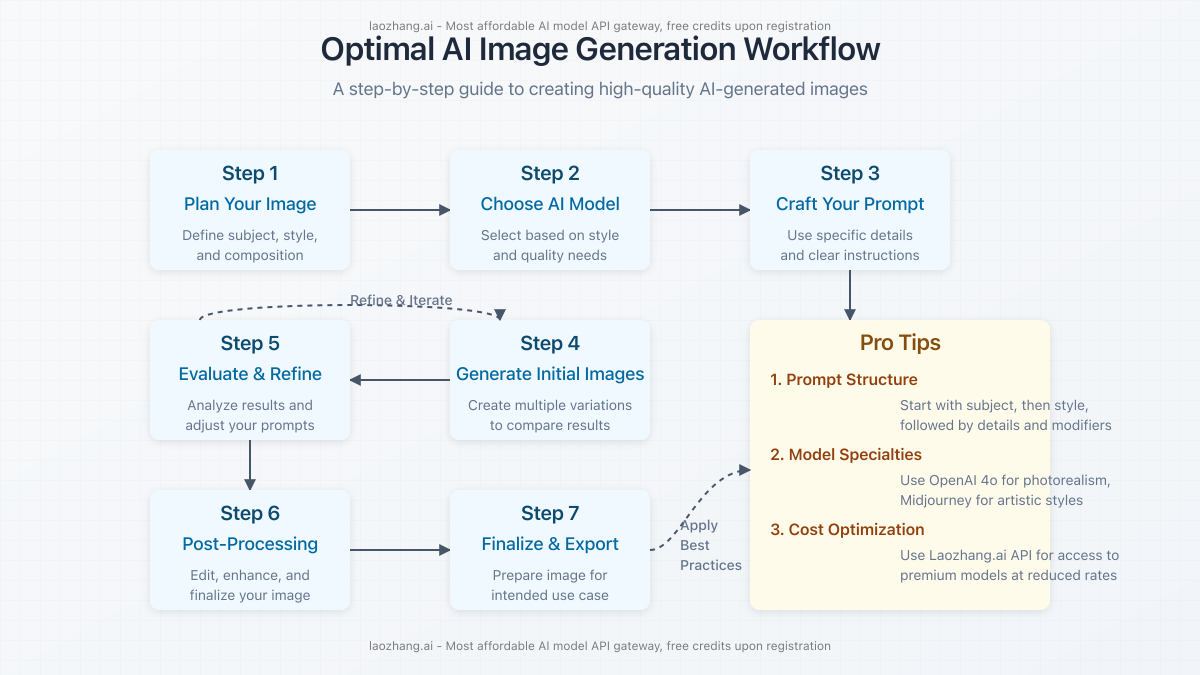
Cost-Effective AI Image Generation with Laozhang.ai
For developers and businesses seeking affordable API access to top-tier AI image generators, Laozhang.ai offers a compelling solution as an API intermediary service.
Key Benefits:
- Access to multiple AI models including GPT-4o’s image generation capabilities
- Significantly reduced pricing compared to direct API access
- Simplified authentication and consistent API interface
- Free credits upon registration to test capabilities
Using Laozhang.ai as your API gateway can reduce costs by up to 70% compared to direct model access while maintaining the same quality and capabilities.
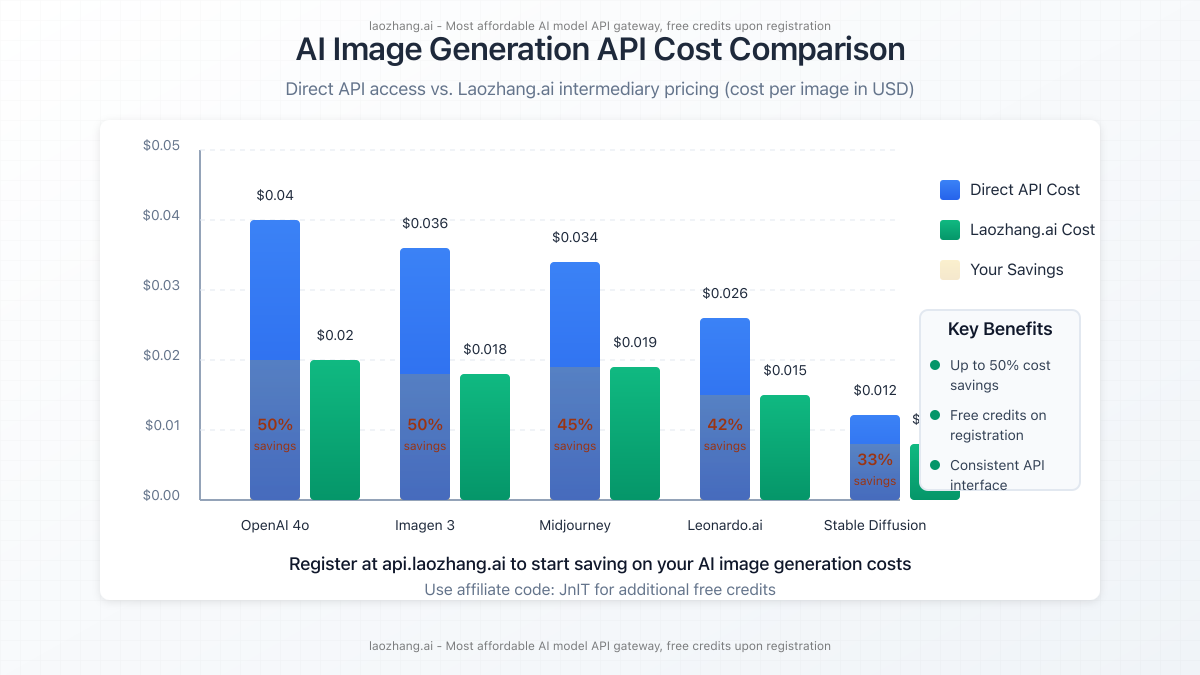
Example API Implementation
Here’s a straightforward example of generating an image using the Laozhang.ai API:
curl -X POST "https://api.laozhang.ai/v1/chat/completions" \
-H "Content-Type: application/json" \
-H "Authorization: Bearer $API_KEY" \
-d '{
"model": "gpt-4o-image-vip",
"stream": false,
"messages": [
{
"role": "user",
"content": [
{
"type": "text",
"text": "Generate a photorealistic mountain landscape at sunset with a small cabin"
}
]
}
]
}'This API call will return a high-quality image generated by GPT-4o at a fraction of the cost of direct API access.
Register at Laozhang.ai to receive free credits and start experiencing cost-effective AI image generation.
Best Practices for Optimal AI Image Generation
Creating stunning AI-generated images requires more than just basic prompts. Here are essential techniques to maximize results:
1. Crafting Effective Prompts
The difference between average and exceptional AI-generated images often comes down to prompt engineering:
- Be specific about subject, style, lighting, and composition
- Describe details in order of importance
- Include artistic references where relevant (e.g., “in the style of Monet”)
- Use positive instructions rather than negations
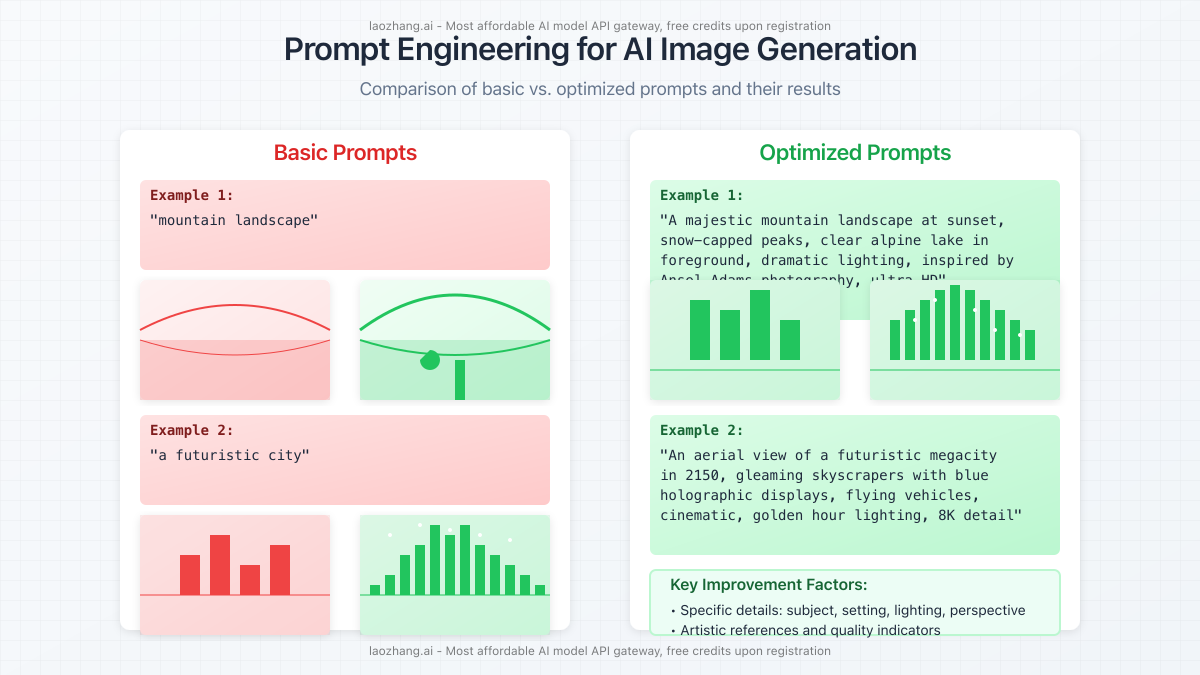
2. Understanding Model Strengths
Each AI image generator has unique strengths worth leveraging:
- OpenAI 4o: Photorealism and precise prompt adherence
- Midjourney: Artistic interpretation and stylistic variety
- Imagen: Natural lighting and environmental detail
- Leonardo.ai: Custom trained styles and consistency
3. Post-Generation Workflows
Most professionals use AI-generated images as a starting point:
- Combine multiple generations for ideal composition
- Refine details in standard editing software
- Use inpainting for targeted adjustments
- Consider upscaling for higher resolution outputs
Conclusion: The Future of AI Image Generation
AI image generation has transformed from a technological curiosity to an essential tool for creators, marketers, and businesses. The capabilities available in 2025 were nearly unimaginable just a few years ago, with new advancements continuing to emerge.
For those looking to incorporate these powerful tools into their workflow while managing costs, intermediary services like Laozhang.ai offer an excellent balance of quality, accessibility, and affordability.
Start experimenting with these technologies today to gain a competitive advantage in your creative or business endeavors.
Frequently Asked Questions
Are AI-generated images copyright-free?
The copyright status of AI-generated images varies by jurisdiction and the specific AI tool used. Most commercial services grant usage rights to the prompt creator, but with certain limitations. Always review the terms of service for your chosen platform.
How can I identify AI-generated images?
While increasingly difficult, AI-generated images may still contain telltale signs such as unusual hand anatomy, inconsistent text rendering, or subtle pattern repetition. Many modern AI images now include invisible watermarks as well.
Which AI image generator is best for commercial use?
For commercial applications, services with clear licensing terms like Leonardo.ai, Adobe Firefly, and Midjourney’s commercial plan offer the most protection. These platforms provide specific commercial usage rights and indemnification options.
How can I reduce costs when using AI image generators?
Using API intermediaries like Laozhang.ai can significantly reduce costs while maintaining access to premium models. Additionally, carefully planning your generations and using lower-resolution test images before final rendering can optimize credit usage.
Can I train AI on my own art style?
Yes, several platforms including Leonardo.ai, RunwayML, and Stable Diffusion implementations offer custom training or fine-tuning options that allow you to teach the AI your specific style or brand aesthetic.
What are the ethical considerations with AI image generation?
Key ethical considerations include proper attribution of inspiration, avoiding the replication of copyrighted works, ensuring appropriate content generation, and transparency about AI usage in professional contexts.